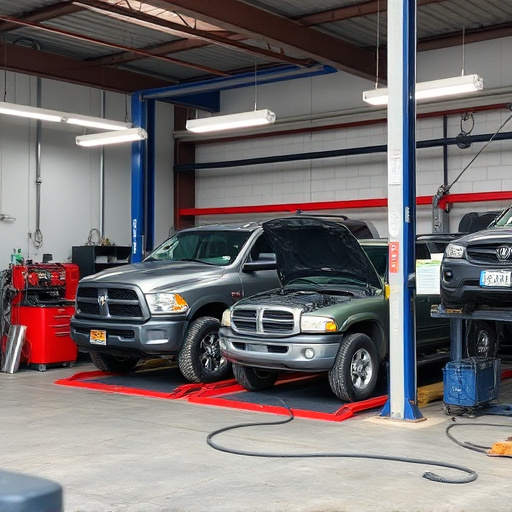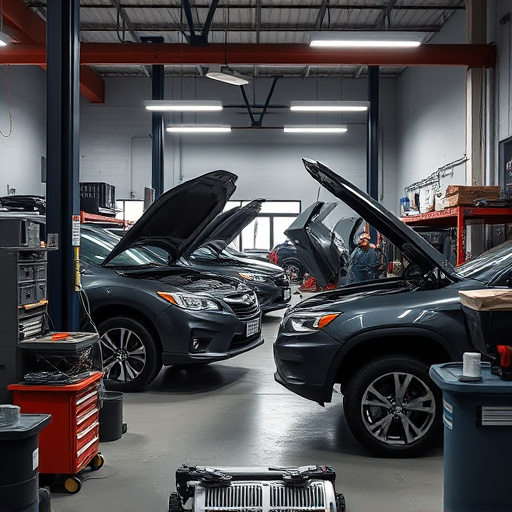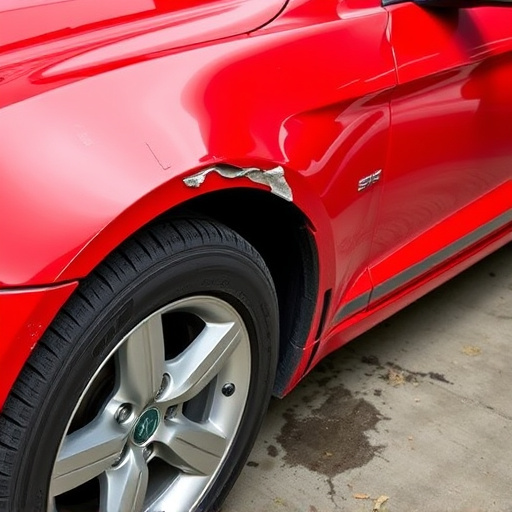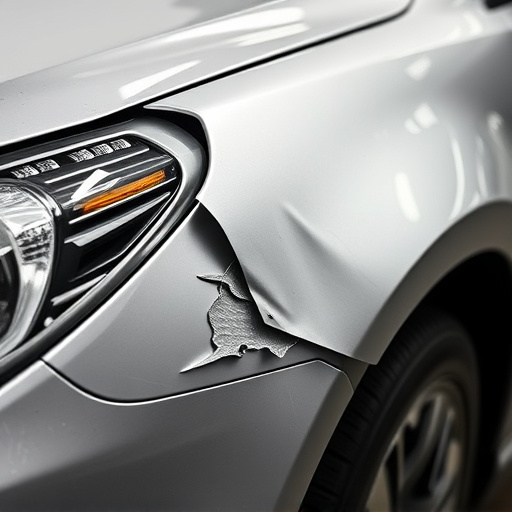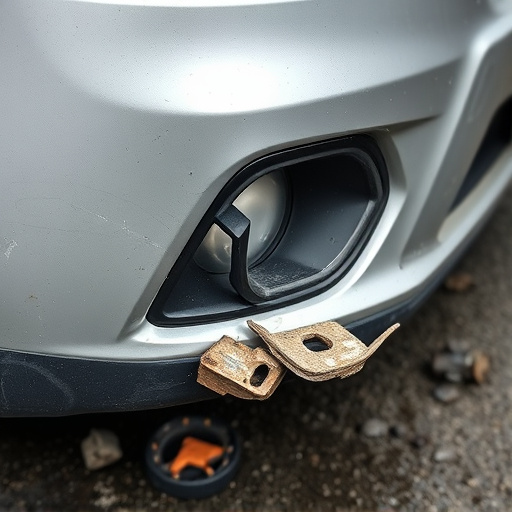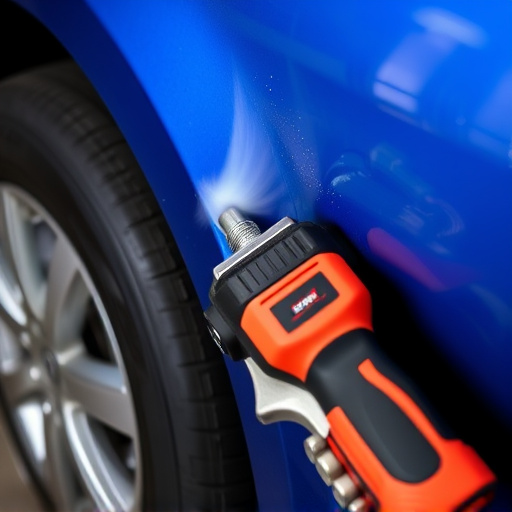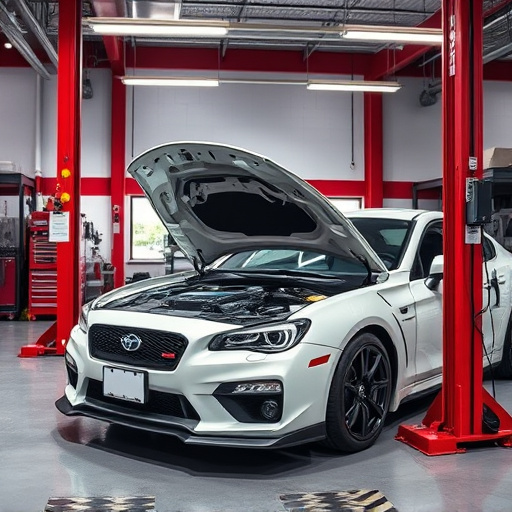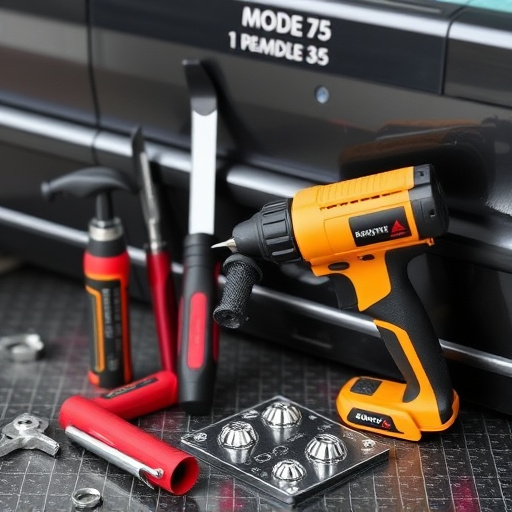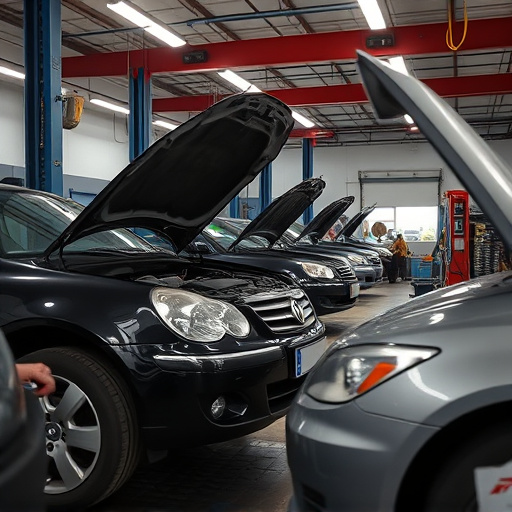Auto body seam sealers are specialized products that create durable, water-tight seals along vehicle body panels, protecting against moisture intrusion and enhancing appearance by filling gaps. Effective application requires meticulous surface preparation, precision tooling, consistent pressure, and hand technique, with practice leading to optimal results. These sealers serve crucial roles in restoration, fleet repair, and body shop settings.
Auto body seam sealers are essential for maintaining vehicle aesthetics and structural integrity. This guide provides valuable tips on applying these crucial products effectively. We’ll explore different types of sealers and their specific uses, ensuring you’re prepared for any repair job. Learn the art of surface preparation, from cleaning to sanding, to create a perfect canvas for application. Discover expert techniques and tricks for seamless (pun intended) application, ensuring long-lasting results that rival the factory finish.
- Understanding Auto Body Seam Sealers: Types and Uses
- Preparing the Surface: Key Steps Before Application
- Applying Sealers Effectively: Techniques and Tips
Understanding Auto Body Seam Sealers: Types and Uses

Auto body seam sealers are specialized products designed to create a durable and water-tight seal along vehicle body panels, ensuring structural integrity and protecting against moisture intrusion. These sealers come in various types, each serving distinct purposes in auto body repair and restoration. One common type is the epoxy sealer, known for its exceptional bonding strength and versatility, making it suitable for both minor scratch repairs and major car collision repairs. Polyurethane sealers, another popular choice, offer excellent flexibility and resistance to extreme temperatures, ideal for sealing complex curves and contours often found in modern vehicle designs.
Beyond their primary function of sealing seams, auto body seam sealers play a crucial role in enhancing the overall appearance of a vehicle. They help fill in gaps and imperfections left by tire services or minor scuffs, contributing to a smooth, seamless finish. In addition, these sealers ensure that any repair work is not just visually appealing but also structurally sound, protecting against water damage that could compromise the integrity of the car’s body over time.
Preparing the Surface: Key Steps Before Application
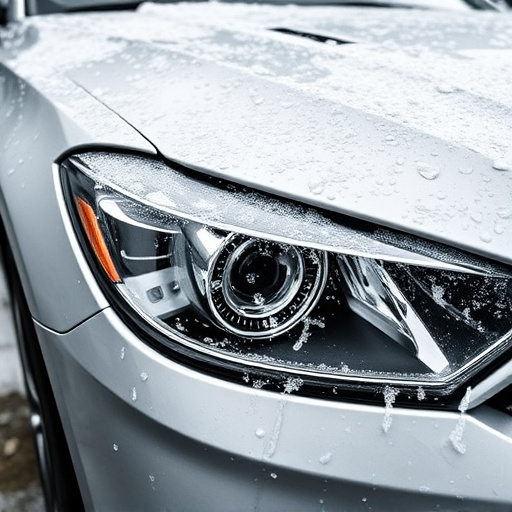
Before applying auto body seam sealers, preparing the surface is a crucial step that cannot be overlooked. Start by thoroughly cleaning the area to remove any dirt, grease, or debris that could hinder adhesion. This involves using appropriate solvents and degreasers to ensure the surface is free from contaminants. Once cleaned, inspect the metal for any signs of rust, corrosion, or damage. Repair or replace any damaged panels and ensure the surface is dry and free from moisture before proceeding.
Additionally, sanding the area lightly can help create a rougher texture, increasing friction and enhancing the bond between the sealer and the metal. Using the right sandpaper grit for your project, remove any remaining paint or residue. Cleaning and preparing the surface properly sets the stage for successful application of auto body seam sealers, ensuring long-lasting protection and a seamless finish in automotive restoration, fleet repair services, or vehicle body shop settings.
Applying Sealers Effectively: Techniques and Tips
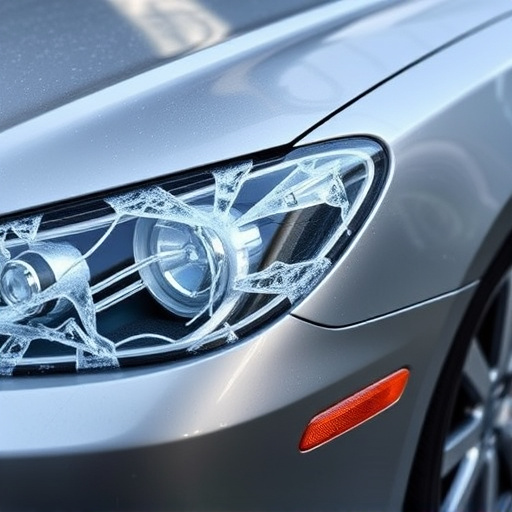
Applying auto body seam sealers effectively requires a thoughtful approach to ensure superior results. Before starting, preparation is key; clean the surface thoroughly, ensuring no debris or contaminants remain, as these can compromise the bond strength. This meticulousness sets the stage for seamless (pun intended) application.
Techniques involve using the right tools, like precision applicators, to control the flow and spread of the sealer evenly across the joint. Working in small sections, especially with intricate car designs like those found in Mercedes-Benz repair, allows for precise adjustments and minimizes wastage. Remember, consistent pressure and a steady hand are vital during application. Practice makes perfect, so consulting a collision center’s experienced technicians can provide valuable insights into achieving the best outcomes when using auto body seam sealers.
Auto body seam sealers are indispensable for achieving durable, high-quality finishes in automotive repairs. By understanding the different types, preparing surfaces meticulously, and applying them correctly, professionals can ensure optimal bonding and long-lasting protection. Incorporating these tips into your auto body repair regimen will elevate the standard of your work, ultimately enhancing customer satisfaction with seamless, robust repairs.

